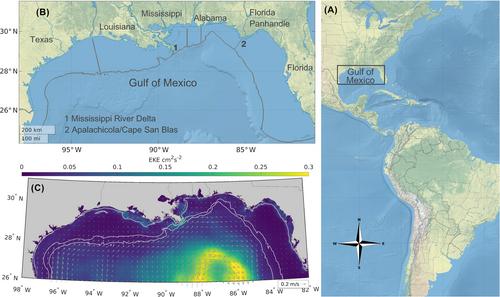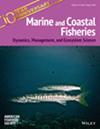Red Snapper connectivity in the Gulf of Mexico
Abstract
Objective
Red Snapper Lutjanus campechanus is a valued, heavily exploited fish species in the Gulf of Mexico. The species is distributed over a wide variety of habitats through its life history, and current evidence suggests moderate to high site fidelity, with particularly small home ranges and high residency times when fish are associated with reef structures. Given these life history traits, it is not surprising that within the gulf, there is evidence that the overall population is composed of multiple subpopulations. Thus, dispersal of early life stages plays an important role in the Red Snapper gulf population structure and dynamics, as embryo and larvae can be transported for longer distances, driving stock mixing and supplying recruits to sustain and replenish local subpopulations. Here, we assess the connectivity patterns of Red Snapper driven by larval dispersal in the Gulf of Mexico by simulating dispersal and recruitment.
Methods
This study employs a modeling approach to examine the probabilistic connectivity patterns of Red Snapper influenced by larval dispersal in the Gulf of Mexico. It investigates the impact of local oceanography, species behavior, and demographics on Red Snapper population structure. We estimate the spatial characteristics of Red Snapper dispersal, quantifying connectivity and larval supply fluxes between management jurisdictions, including state boundaries and the three-area boundaries recently selected during the stock identification portion of the Gulf of Mexico Red Snapper Research Track Assessment. We use the modeled probability of settlement as a proxy for recruitment.
Result
Our results indicate that Red Snapper recruitment occurs mostly close to their spawning sites (median distance 80 km). Simulated dispersal revealed exchange of Red Snapper larvae across state boundaries, with Alabama, Mississippi, and Louisiana receiving a considerable supply of recruits from other states. Finally, estimation of subpopulations based on larval exchange support the areal divisions used within the research track stock assessment.
Conclusion
Our results suggest that interstate cooperation in heavily connected regions could benefit management of the species by optimizing sustainable exploitation across the Gulf of Mexico.


 求助内容:
求助内容: 应助结果提醒方式:
应助结果提醒方式:


